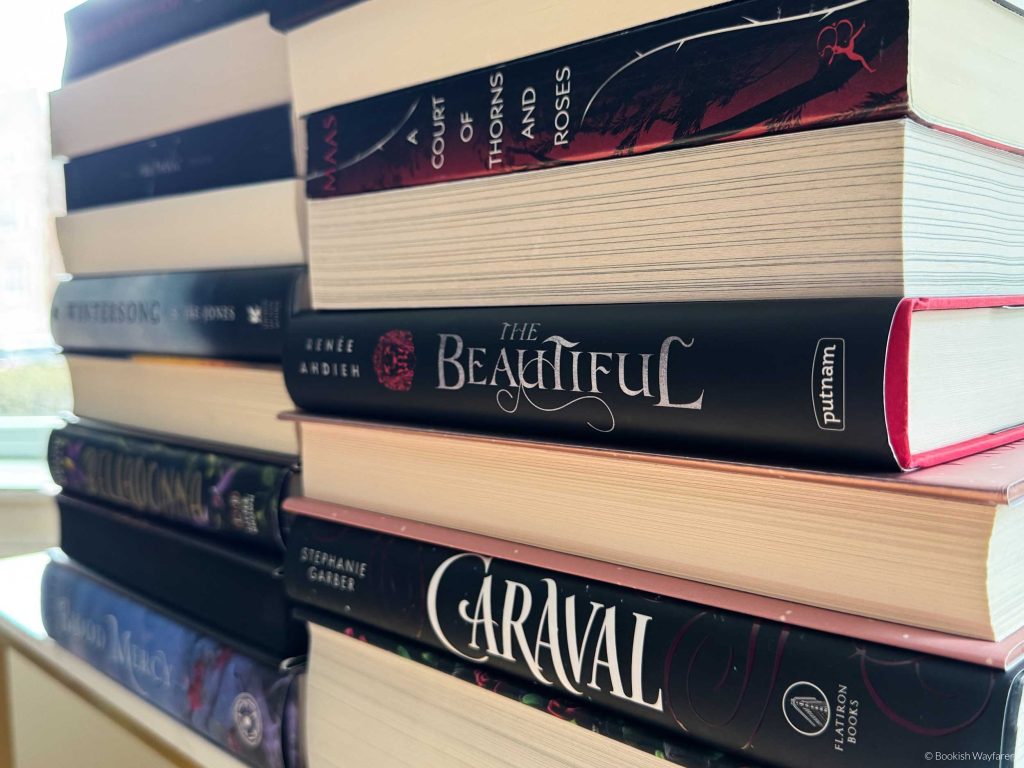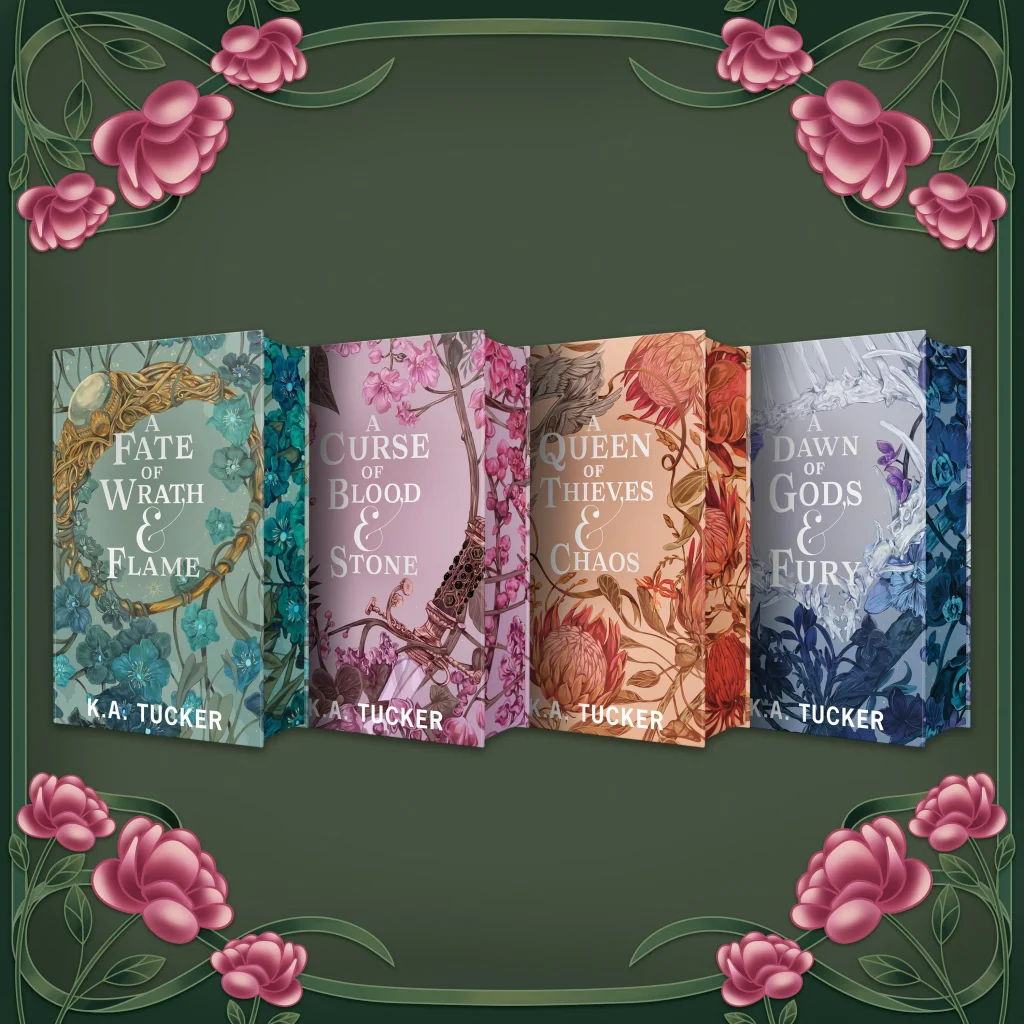
(Bookish Wayfarer n.d.)
Connecting with your audience—understanding their wants, needs, behaviours, and backgrounds—is incredibly important for any marketer. When you connect with your audience, you can enhance your product, drive sales, and strengthen your brand’s reputation. In this era of marketing, people buy from people, and consumers are more interested in brands that match their beliefs, views and ethics. That is why modern marketing often looks at creating ‘tribes’—distinct groups brought together by shared interests and values. Here’s a brief breakdown of a tribe that means a lot to me: Romantasy Book Readers. We’ll look at who they are, what defines them, and how marketers and advertisers need to adapt to engage this community.
Tribe: Romantasy Book Readers
Romantasy Book Readers are a passionate and engaged group, united by their love of stories where romance and fantasy combine. This tribe values creativity, high-quality fiction, attractive physical books, a cosy reading experience, and fan-driven art. They actively seek out escapism and empowerment through the pages of their favourite books, and their online presence—especially on BookTok and Instagram—only adds to their sense of community.
What Makes Romantasy Readers Unique?
This group goes well beyond simple reading—for them, it’s about the broader experience.
Imagination and Escapism
Romantasy fans seek creative storylines that mix rich fantasy settings with emotional story arcs. They enjoy series such as Sarah J. Maas’ A Court of Thorns and Roses and Jennifer L. Armentrout’s From Blood and Ash for their world-building and complex characters (The Guardian, 2021). The ability to lose themselves in new worlds is central to this tribe.
Quality and Aesthetics
Romantasy readers appreciate the craft that goes into books—special editions, detailed artwork, sprayed edges and embossed covers are highly prized. Subscription boxes like FairyLoot and Illumicrate, with their exclusive editions and extras, are especially popular (FairyLoot, 2024).
Inclusivity and Challenging Norms
Representation matters deeply. This community actively seeks characters and stories that reflect a range of identities and relationship types, including LGBTQ+ protagonists, diverse backgrounds, and polyamorous relationships (BBC, 2022). Reverse harem and other unconventional dynamics are growing trends, and campaigns like Penguin’s ‘Read Proud’ showcase how publishers respond (Penguin Random House, 2024).
Community, Social Media, and Participation
Platforms like BookTok have had a profound impact, turning niche books into bestsellers through trends, fan art, lively discussion and recommendations (New York Times, 2021; The Guardian, 2022). Romantasy readers value genuine interaction—book clubs, “unboxing” videos, fan theories, reviews and memes all contribute to a dynamic culture.
Cosy Reading Experiences
It’s not only about the books but about the entire atmosphere. Many Romantasy readers enjoy ‘cosy reading’—candles, blankets, themed teas and a quiet corner are all part of the experience. Subscription boxes often include curated extras to make reading special, and live or virtual events like author Q&As or fan art showcases help bring people together (Publishers Weekly, 2022).

(Fairyloot n.d.)
How Marketers and Publishers Can Connect
Understanding this tribe isn’t just about boosting sales; it’s about creating campaigns that reflect the values and experiences Romantasy readers care about.
Embrace Inclusivity and Representation
For this audience, inclusivity isn’t just a talking point—it’s an expectation. Marketing material should celebrate the diversity seen in Romantasy books, whether by highlighting LGBTQ+ protagonists, unconventional romance, or stories from a variety of backgrounds (Penguin Random House, 2024; BBC, 2022).
Highlight Craft and Detail
Showcasing cover design, unique artwork, and bundled items (like those in FairyLoot boxes) can help create buzz and emphasise value (Forbes, 2023; FairyLoot, 2024).
Use Community Platforms Authentically
BookTok, Bookstagram and Discord groups are where Romantasy readers share, create and influence trends. Marketers should encourage user-generated content—reviews, fan art, hashtags, and interactive campaigns—which generally feel more authentic for this audience and help books reach wider, more engaged circles (The Guardian, 2022; Publishers Weekly, 2022).
Create Experiences
Romantasy readers respond to immersive experiences, whether in the form of themed subscription boxes, virtual launch parties, or interactive writing workshops. Brands that add value to reading as an experience are more likely to be remembered (Publishers Weekly, 2022).
Romantasy as a Driver of Social Change
This community’s impact extends beyond reading habits and into social norms. Marketing within Romantasy works because it can challenge outdated ideas about identity, romance and gender by championing diverse stories (BBC, 2022; Vox, 2021). Campaigns featuring LGBTQ+, non-binary, or polyamorous characters make space for more people to see themselves in stories—a powerful way to create empathy and break down prejudice (NPR, 2021).
By connecting strong storytelling with real-world issues and diverse representation, Romantasy Book Readers and publishers are not only shaping the future of fiction but nudging wider cultural attitudes in a more accepting direction.
Conclusion
Romantasy Book Readers represent more than a simple interest group. Their demand for diversity, creativity, and quality is changing how stories are told, published and marketed. For marketers, real engagement starts with authenticity: understanding the values of this community and building campaigns that highlight inclusivity, craftsmanship and genuine community spirit.
In the end, the Romantasy tribe is helping shape modern publishing into a space where more readers feel included—and where the power of stories can spark conversations and drive change, both within fiction and in society more broadly.
References
BBC (2022) ‘How fantasy fiction is leading the way in diversity’, BBC Culture. Available at: https://www.bbc.com/culture/article/20220301-how-fantasy-fiction-is-leading-the-way-in-diversity
FairyLoot (2024) ‘Shop FairyLoot’. Available at: https://www.fairyloot.com/
Forbes (2023) ‘The best book subscription boxes’, Forbes. Available at: https://www.forbes.com/sites/forbes-personal-shopper/2023/01/10/best-book-subscription-boxes/
New York Times (2021) ‘How #BookTok is changing the publishing industry’, The New York Times. Available at: https://www.nytimes.com/2021/06/10/books/booktok-tiktok.html
NPR (2021) ‘Why representation matters in fiction’, NPR. Available at: https://www.npr.org/2021/06/29/1010837021/why-representation-matters-in-fiction
Penguin Random House (2024) ‘Read Proud’. Available at: https://www.penguinrandomhouse.com/read-proud
Publishers Weekly (2022) ‘How book boxes are reshaping the industry’, Publishers Weekly. Available at: https://www.publishersweekly.com/pw/by-topic/industry-news/bookselling/article/89345-how-book-boxes-are-reshaping-the-industry.html
The Guardian (2021) ‘Romance novels: diversity and inclusivity’, The Guardian. Available at: https://www.theguardian.com/books/2021/aug/10/romance-novels-diversity-inclusivity
The Guardian (2022) ‘How BookTok is changing the publishing industry’, The Guardian. Available at: https://www.theguardian.com/books/2022/aug/15/how-booktok-is-changing-the-publishing-industry
Vox (2021) ‘Queer representation in books’, Vox. Available at: https://www.vox.com/culture/2021/6/30/22556400/queer-representation-books-lgbtq
Leave a Reply